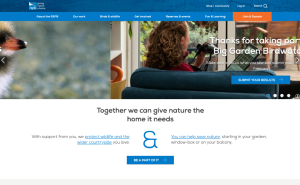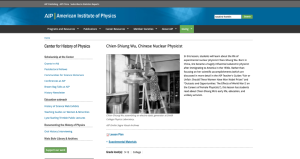General Interest
Back to Top
|
 |
|
We the People
|
Social studies |
|
Calling all history buffs and legal theorists: You may find We the People of particular interest. This weekly podcast is produced by the National Constitution Center, a nonpartisan, nonprofit organization dedicated to increasing "awareness and understanding of the Constitution among the American people," offering well-regarded visual tools and Educational Resources (featured in the 09-13-19 Scout Report). Hosted by the President of the National Constitution Center, We the People provides Constitutional insights on a variety of topics and feature stakeholders on all sides of the political spectrum. The 44 episodes (as of this write-up) offer in-depth discussions on constitutional clashes, civil rights, and constitutional legacy. Listeners will learn from experts in the field who explore the constitutional and historical dimensions of issues that are making headlines, covering ground from the Founding Fathers to the current Supreme Court. A new episode is released each week, and most are around an hour in length. Readers can stream episodes at the link above by clicking the "We the People" link under Podcasts, or subscribe to We the People via Apple Podcasts, Stitcher, and other platforms. [EMB] |
|





|
|
 |
|
South African Young Academy of Science
|
Science |
|
Launched in 2011 by Mr. Derek Hanekom, Minister of Science and Technology, the South African Young Academy of Science (SAYAS) seeks to cultivate mentorship and opportunity for young scientists that will address "national and global challenges facing society." This website contains a wealth of resources, broken down into a few different pages. On the Projects page, readers will find the SAYAS Blog, which features posts such as "A Letter from 2050" where students write to their future selves. The News page allows visitors to stay up-to-date on the latest advancements and opportunities from the Committee. Next, on the Lindau page, readers can learn about the Lindau Nobel Laureates Meeting, an annual conference that brings together young scientists across many different disciplines. Finally, on the Publications page, readers can find reports such as "Policy Direction Eradication of Hunger and Achievement of Food Security," and "Science and (Un)Certainty: Exploring Science, Knowledge Production, Communication and Uptake in a Post-Truth World." Readers may also want to check the Home page for access to SAYAS's recent Twitter posts and Calendar. [EMB] |
|





|
|
 |
|
Narratively
|
Language Arts |
|
For the storyteller in all of us, Narratively provides a platform to share and read stories that embody all aspects of the human experience. Founded in 2012, Narratively has nearly a decade of experience reimagining the way we craft and consume stories. Their mission is simple: "human stories, boldly told." This "storytelling studio" looks to uplift voices of the "underdog," the imaginative, and the marginalized. They do so by embracing a variety of expressive mediums from podcasts, to short stories, to documentaries and a variety of topics, such as crime, culture, and culinary arts. Recent pieces include (for example) "The Sea Farming Sisters in Recovery," which highlights sustainable farming in Maine by a group of women "in recovery for alcohol." This resource may be of interest to those looking for a creative spark from global, authentic, and passionate storytelling. With a network of storytellers thousands strong and spanning all corners of the world, Narratively highlights content often overlooked by other news outlets. Learn, create, connect, and refresh; there's always something new to read and explore. [EMB] |
|





|
|
 |
|
The United States Water Crisis
|
Science |
|
The United States Water Crisis is an interactive report published as a part of a graduate thesis in May 2019 by Andrew Levinson (now a coder and graphic developer for The Wall Street Journal) that explores the effects of forces like "population growth and climate change," on the United States's water supplies. The graphic storytelling website allows users to scroll through three sections that demonstrate how our water systems have changed and what the consequences of these changes are. The first section, Background, answers questions such as "Why Are We Running Out of Water?" and "Where Does Our Freshwater Come From?" The second section, Water Stress, explores conditions and climate events that alter our water systems, such as droughts and floods. The third section, Water Action, allows users to "pick [a] conservation strategy," including "behavioral changes" and "infrastructure investments," and use sliders to explore how different magnitudes of each strategy will influence overall conservation efforts. While the site focuses on a national water crisis, it does reference other critical water events that have occurred globally in Cape Town, Mexico City, and Australia. The United States Water Crisis concludes with a hope that "understanding the magnitude of these specific courses of action will enable us to drastically change our relationship with the most valuable natural resource on earth." [EMB] |
|





|
|
 |
|
Royal Society for the Protection of Birds
|
Science |
|
Ornithologists and birders may enjoy the Royal Society for the Protection of Birds (RSPB). The origins of the RSPB trace back to Emily Williamson, who founded the group from her Manchester home in 1889. Since then, the mission and work of the organization continue to expand to promote "species recovery" and conservation efforts. The site is packed full of useful learning tools and resources to explore. Users may want to begin by navigating to the About RSPB page, where they can learn the history and mission of the organization. From there, explore the Our Work page, which features News and Blog sections detailing the state of birds and biodiversity in the United Kingdom. Under the Birds & Wildlife page, users can explore interactive features such as "Identify a bird," a tool that asks questions about the location and look of a bird to attempt to identify its species. On the Get Involved and Reserves & Events pages, users can learn more about activities hosted by the RSPB. Finally, under Fun & Learning teachers and other users will find games, activities, and other resources to bring birding to life in their classrooms or homes. [EMB] |
|





|
|



















